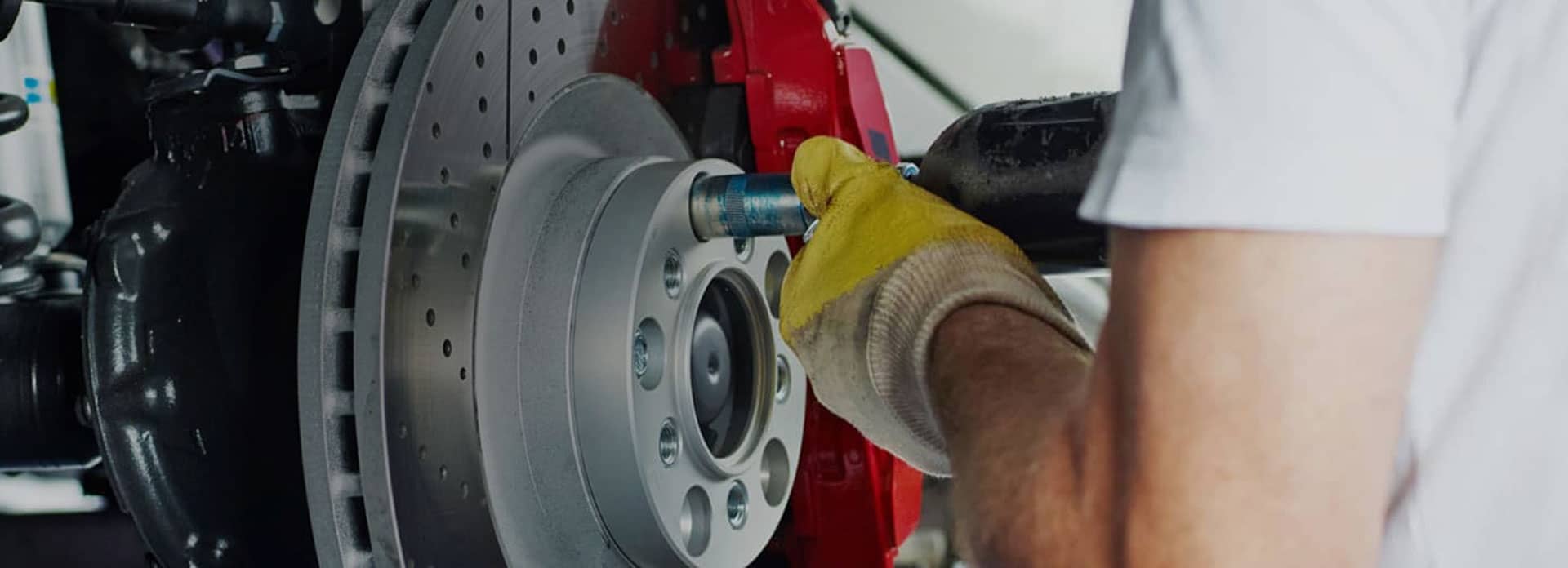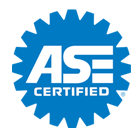
AUTONET TV
Archive for March 2022The Engine Gets a Boost (Turbocharged Engine Maintenance)Posted March 27, 2022 8:41 AMIf someone told you that your vehicle could have the same power but with a smaller engine, wouldn't that sound like great idea? Just think, a smaller engine would save you money at the gas station and you'd still get the same horsepower. The technology to do just that has been around for a long time. It's called a turbocharger. Race cars and other performance vehicles have been using turbochargers for years. It gives them a power boost without the need of a bigger engine, saving them fuel and pit stops. Automakers have offered turbo gasoline and diesel engines for years, but there were problems with durability. Plus drivers had to make some driving adjustments with the way turbos delivered power. Newer turbos, though, have been vastly improved, and manufacturers are including them in more models. For example, Jeep offers its 2019 Cherokee with a choice of two engines that each make about 270 horsepower. One is a 4-cylinder turbocharged engine and the other is a 6-cylinder conventional gasoline engine. The general rule of thumb is: the fewer the cylinders, the better the fuel economy. A turbocharged vehicle uses a turbine that is turned by exhaust gas. That compresses air that goes into the engine, which then allows it to use more fuel per second, increasing power. One advantage of a turbo is that it is only engaged when the driver demands more power from the engine by stepping on the throttle harder. One thing to remember, though, is that turbocharged engines have additional parts and are more complex. That means they can be more expensive to maintain. The upside? You'll likely save fuel. Like any complex machine, it's important that you maintain your turbo vehicle so it will give you more years of service. A.G. Automotive & Diagnosis technicians are trained to inspect and service the systems associated with a turbo engine. If you already drive a turbocharged vehicle, keep up your regular maintenance schedule to get the longest life and performance out of it. Because of the advantages these powertrains offer, turbo engines are definitely here to stay. A.G. Automotive & Diagnosis Everything You Ever Wanted to Know About Wheel BearingsPosted March 20, 2022 7:13 AM
Wheel bearings are pretty simple parts. They're made of high quality steel and are engineered to last 100,000 miles (160,000) or more if properly cared for. The bearings do two jobs: First, they allow the wheel to freely rotate with as little friction as possible. Second, they support the weight of the vehicle. For example, if your car weighs 3,600 pounds (1600 kilogram), each wheel has to support approximately 900 pounds (400 kilograms). That's a lot of heavy lifting over those long distances. A.G. Automotive & Diagnosis Are There Blind Spots in Winnetka?Posted March 13, 2022 9:23 AM
All Winnetka drivers have blind spots – and no, I'm not talking about the fact that you really don't sing like Adele. I mean the areas of the road that you can't see when you're driving around Winnetka. A.G. Automotive & Diagnosis Why You Have an O2 Sensor (Oxygen Sensor)Posted March 6, 2022 8:28 AMIf someone asked you what gas made up the largest portion of the atmosphere, what would you guess? Well, it's not oxygen; it only makes up 20.9 percent. But since we're talking about oxygen, you should know that your vehicle uses oxygen sensors to make sure your engine is running the way it should. The oxygen sensors measure how much oxygen is in your exhaust. If there's too much, it means there's a problem with the mixture of fuel and air. The sensor sends signals to computers in your engine and adjusts the mixture so it maximizes performance and efficiency. It does this constantly. Many vehicles have multiple oxygen sensors. Some have one close to the engine, another close to the muffler. Two measurements are better than one since they allow readings to be more accurate. You may have a vehicle with a dual exhaust, so you'd have twice as many oxygen sensors. Your oxygen sensors can fail. One thing that can damage them is contamination from bad fuel. The sensors can simply wear out, though they usually last a long time. It's not unusual for an oxygen sensor to last 100,000 miles/160,000 km. One more thing that can cause an oxygen sensor to fail is residue from an engine that's burning oil. Plus contaminants from the road like salt can also cause problems. Here are some signs that your oxygen sensors might be failing.
Head to your service facility and tell your advisor what symptoms your vehicle is experiencing. They have the equipment and training to track down the issue. Note that simply replacing the oxygen sensor is often not enough since it doesn't get to the root of the problem; other repairs may be needed. So make sure your oxygen sensors are working the way they should be. Oh, and back to the question of what gas makes up most of the Earth's air? It's nitrogen, which comprises 78 percent of the air we—and our engines—breathe. A.G. Automotive & Diagnosis | ||
SearchArchiveMay 2019 (16)June 2019 (5) July 2019 (4) August 2019 (4) September 2019 (5) October 2019 (4) November 2019 (4) December 2019 (5) January 2020 (5) February 2020 (4) March 2020 (5) April 2020 (4) May 2020 (5) June 2020 (4) July 2020 (4) August 2020 (5) September 2020 (4) October 2020 (4) November 2020 (5) December 2020 (4) January 2021 (6) February 2021 (4) March 2021 (4) April 2021 (4) May 2021 (5) June 2021 (4) July 2021 (4) August 2021 (5) September 2021 (4) October 2021 (5) November 2021 (4) December 2021 (4) January 2022 (6) February 2022 (4) March 2022 (4) April 2022 (4) May 2022 (5) June 2022 (4) July 2022 (5) August 2022 (4) September 2022 (4) October 2022 (5) November 2022 (4) December 2022 (4) January 2023 (5) February 2023 (4) March 2023 (4) April 2023 (5) May 2023 (4) June 2023 (4) July 2023 (5) August 2023 (4) September 2023 (4) October 2023 (5) November 2023 (4) December 2023 (5) January 2024 (5) February 2024 (4) March 2024 (5) April 2024 (3) | CategoriesAir Conditioning (7)Alignment (9)Alternator (1)Auto Safety (4)Automotive News (7)Battery (7)Brakes (11)Cabin Air Filter (4)Check Engine Light (4)Cooling System (12)Dashboard (2)Diagnostics (3)Differential Service (1)Emergency Items (1)Engine Air Filter (1)Exhaust (5)Fluids (10)Fuel Economy (6)Fuel Saving Tip: Slow Down (1)Fuel System (24)Headlamps (5)Inspection (7)Keys to a long lasting vehicle (2)Maintenance (25)Monitoring System (2)Oil Change (2)Older Vehicles (1)Parts (2)PCV Valve (1)Safe Driving (1)Safety (4)Serpentine Belt (3)Service Intervals (3)Service Standards (5)Shocks & Struts (5)Steering (6)Suspension (1)Timing Belt (5)Tire Rotation and Balancing (1)Tires (2)Tires and Wheels (25)Transfer Case Service (1)Transmission (3)Trip Inspection (3)Warranty (1)What Customers Should Know (31)Windshield Wipers (5)Winter Prep (2)Winter Tires (1) | |

OUR REVIEWS


CHIBUEZE JBI, 04/05/2024CHUCK IS THE MAN! HE KNOWS HIS MOPARS , I AM A RETURNING A-1 CUSTOMER, HIS ASSISTANT IN THE MORNING IS COURTEOUS AND FUNNY ?, TAMMY IS AWESOME ?? ALSO. #MOPARORNOCAR #SRT 8
join our team
We are currently on the lookout for the following:











